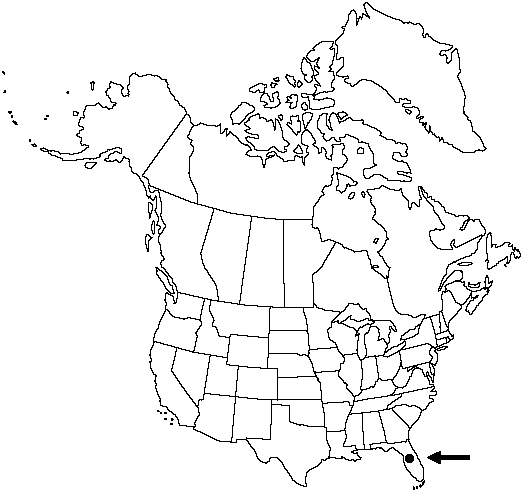Pityrogramma calomelanos var. calomelanos
Leaves 25–120 cm. Petiole black, dull, glabrous or sparsely scaly proximally. Blade elongate-triangular to ovate-lanceolate, 2-pinnate-pinnatifid, sometimes 3-pinnate proximally, densely white-farinose abaxially. Pinnae narrowly triangular, pinnately lobed or divided, flat surfaces in plane of blade. Pinnules short-stalked or sessile, lanceolate, margins serrate to lobed near base. Spores with perispore reticulate and with equatorial flange.
Habitat: Ditches in forested areas
Elevation: 0–20 m
Distribution

Fla., Mexico, West Indies in the Antilles, Central America, South America, widely naturalized in tropical Africa.
Discussion
Pityrogramma calomelanos var. calomelanos is commonly cultivated in greenhouses. In Florida, it is known from a small number of sites in Hillsborough and Polk counties, where it possibly escaped from cultivation. Pityrogramma calomelanos var. austroamericana (Domin) Farwell (Costa Rica to Brazil) is characterized by yellow farina; P. calomelanos var. ochracea (C. Presl) R. M. Tryon (Honduras to Bolivia) possesses scattered trichomes instead of farinose indument.
Selected References
None.